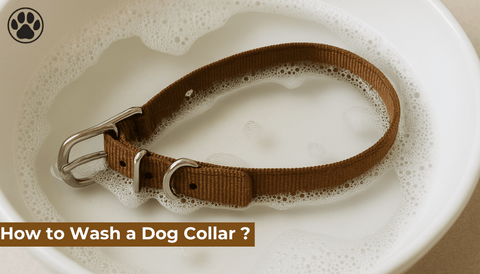
Why Is a Dog’s Nose Wet ?
of reading - words
A dog’s wet nose is one of its most distinctive features, but have you ever wondered why? Many pet owners associate a moist nose with good health, but there’s more to it than just that. In this article, we’ll explore the science behind a dog’s wet nose, the benefits of nasal moisture, and when to be concerned if your dog’s nose is too dry or excessively wet.
The Science Behind a Dog’s Wet Nose
Natural Mucus Production
A dog’s nose is naturally covered in mucus, which helps trap scent particles, making their sense of smell incredibly sharp. This mucus enhances their ability to detect scents, even in minute concentrations, which is why dogs excel in tracking and search-and-rescue operations.
Frequent Licking
Dogs frequently lick their noses, keeping them moist and clean. This behavior serves multiple purposes:
-
Enhances scent detection by spreading moisture and collecting particles.
-
Keeps the nose free from dirt and debris.
-
Helps cool the dog down, as evaporating saliva provides a slight cooling effect.
Nasal Cooling Mechanism
Dogs do not sweat like humans. Instead, they rely on panting and nasal moisture to regulate body temperature. A wet nose aids in the cooling process by evaporating moisture, keeping dogs comfortable, especially in warm environments.
Benefits of a Wet Nose in Dogs
Superior Sense of Smell
Dogs rely on their sense of smell more than any other sense. A moist nose helps them collect scent particles, allowing them to identify people, food, and environmental cues with remarkable precision. This is why dogs are used for:
-
Tracking missing persons
-
Detecting narcotics or explosives
-
Hunting and retrieving games
Health Indicator
A moist nose is often a sign of good hydration and overall well-being. While some fluctuations in wetness are normal, drastic changes can indicate potential health concerns.
Enhancing Environmental Awareness
By licking their nose and enhancing their ability to detect scents, dogs gain a better understanding of their surroundings. This is particularly beneficial in hunting, protection, and search-and-rescue work.
Common Reasons for a Dry Nose
Dehydration
One of the most common causes of a dry nose is dehydration. If a dog is not drinking enough water, their nose may lose moisture. Signs of dehydration include:
-
Sunken eyes
-
Lethargy
-
Dry gums
-
Loss of skin elasticity
Sleeping
Dogs often wake up with a dry nose simply because they haven’t been licking it while asleep. This is completely normal, and the moisture usually returns soon after waking up.
Weather Conditions
Extreme temperatures can dry out a dog’s nose. Hot weather, cold winter air, or excessive sun exposure may cause temporary dryness.
Allergies or Irritants
Environmental allergens, chemicals, or even certain cleaning products can lead to a dry or irritated nose. If your dog’s nose remains dry and cracked, consider whether they have been exposed to dust, pollen, or cleaning chemicals.
Age and Breed Differences
Some breeds naturally have drier noses than others. Brachycephalic breeds, such as Bulldogs, Pugs, and Boxers, may experience nasal dryness more frequently due to their unique facial structure.
When to Be Concerned About a Dog’s Nose
While a wet nose is generally a sign of health, sudden changes in moisture levels should not be ignored. Seek veterinary attention if you notice:
-
Persistent nasal dryness accompanied by cracking or bleeding
-
Excessively runny or mucus-covered nose with abnormal discharge
-
Change in nose color (pale, blue, or white tones)
-
Swelling, lumps, or sores around the nose
How to Maintain a Healthy Dog Nose
Ensure Proper Hydration
Make sure your dog always has access to clean, fresh water. Dehydration can lead to multiple health issues, including a dry nose.
Use Pet-Safe Nose Balms
If your dog experiences frequent nasal dryness, applying a dog-safe nose balm can help restore moisture and prevent cracking.
Protect Against Sunburn
Dogs with light-colored noses are prone to sunburn, which can cause dryness and irritation. Using a pet-friendly sunscreen can help prevent damage.
Monitor Environmental Allergens
If your dog has a dry or irritated nose, try to identify potential allergens in the environment. Common culprits include dust, pollen, household cleaners, and scented sprays.
FAQ
Why is my dog’s nose wet all the time?
A dog’s nose is naturally wet due to mucus production, licking, and environmental factors. This helps them enhance their sense of smell and regulate body temperature.
Should I worry if my dog’s nose is dry?
A dry nose isn’t always a sign of illness. Factors like sleeping, weather conditions, and dehydration can cause temporary dryness. However, if it persists with cracking, bleeding, or other symptoms, consult a vet.
Can I put lotion on my dog’s dry nose?
Only use pet-safe nose balms specifically designed for dogs. Human lotions may contain harmful ingredients that dogs could ingest when licking their nose.
Do certain dog breeds have wetter noses than others?
Yes, some breeds naturally have more moisture-producing glands, while others, like Bulldogs or Pugs, may have drier noses due to their facial structure.
Does a warm nose mean my dog is sick?
A warm nose alone doesn’t indicate illness. However, if it’s accompanied by fever, lethargy, loss of appetite, or nasal discharge, seek veterinary attention.
Conclusion
A wet nose is a key characteristic of a healthy dog, aiding in scent detection, hydration, and cooling. While minor fluctuations in moisture levels are normal, significant changes should be monitored. Understanding the importance of a wet nose can help you ensure your dog stays happy and healthy.




